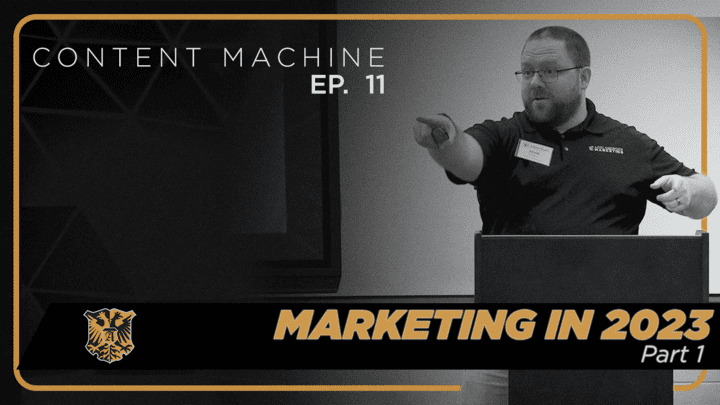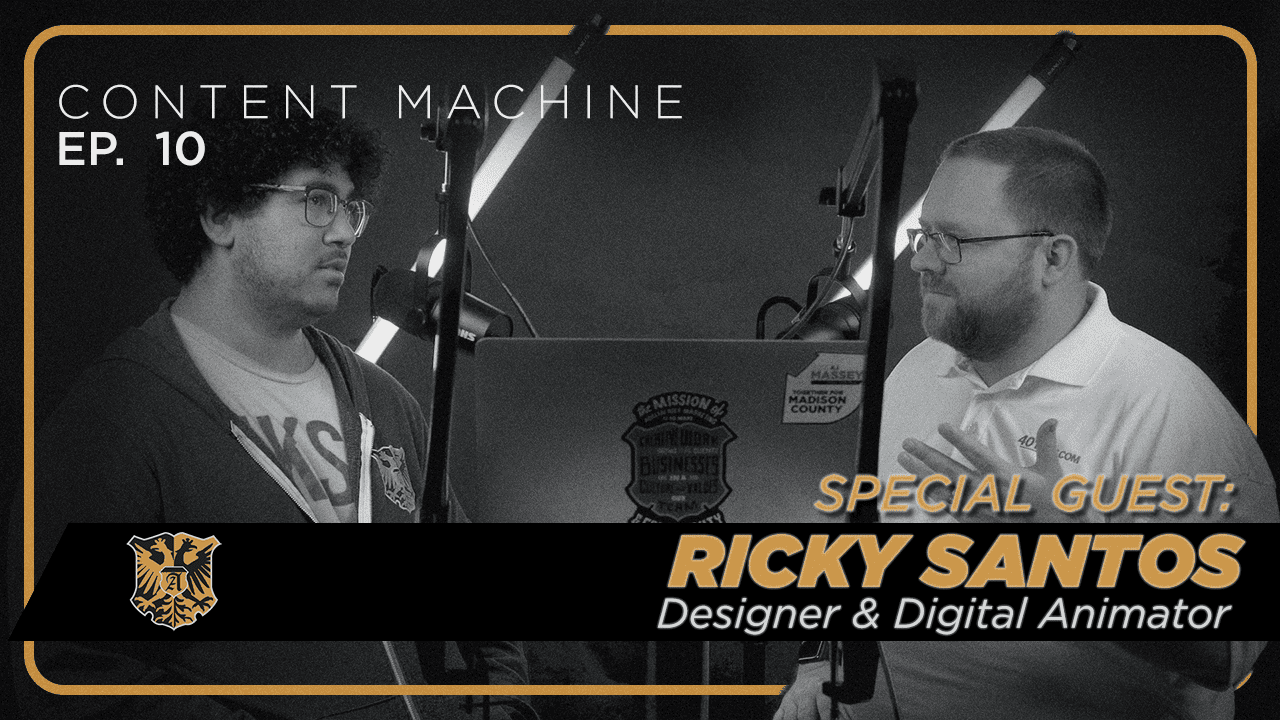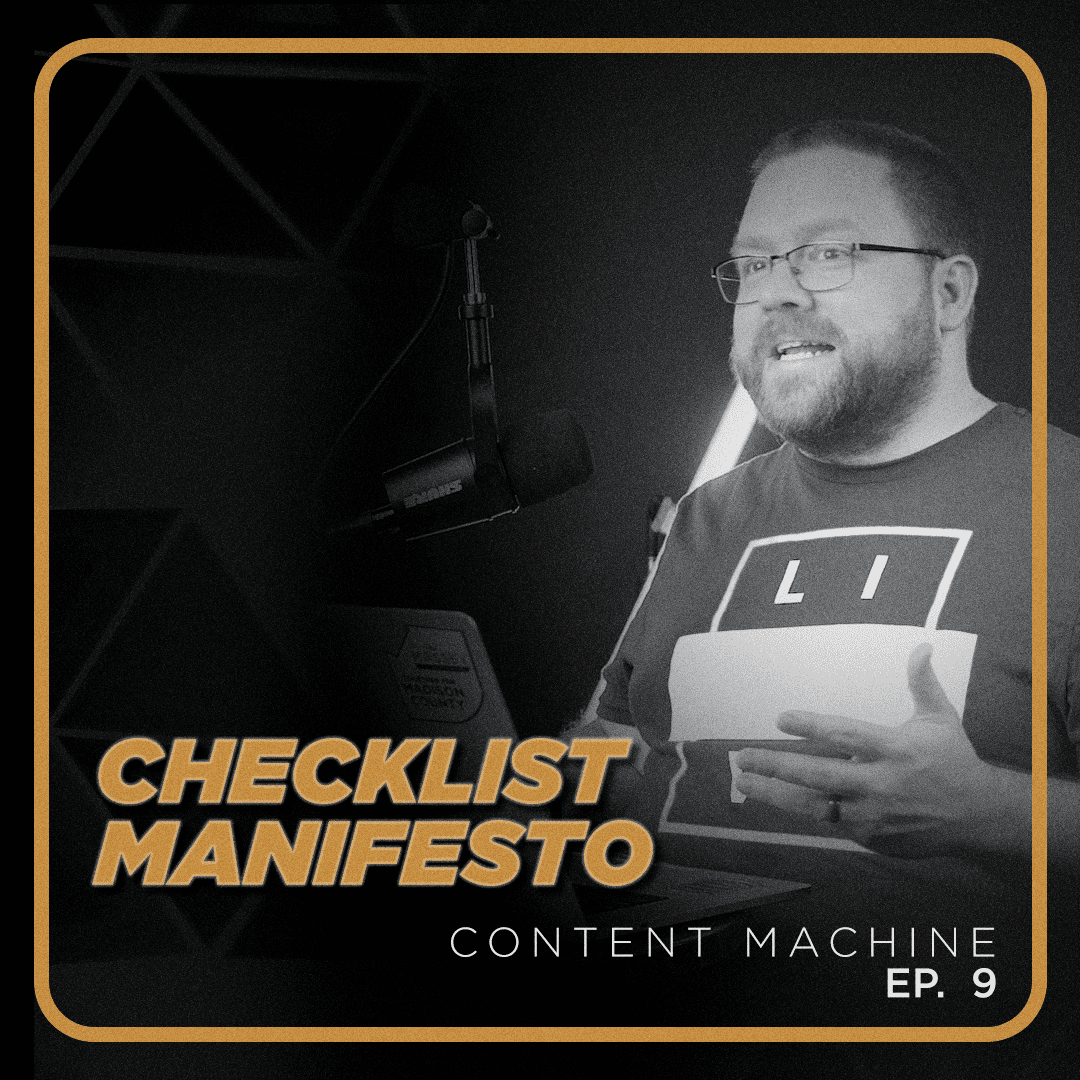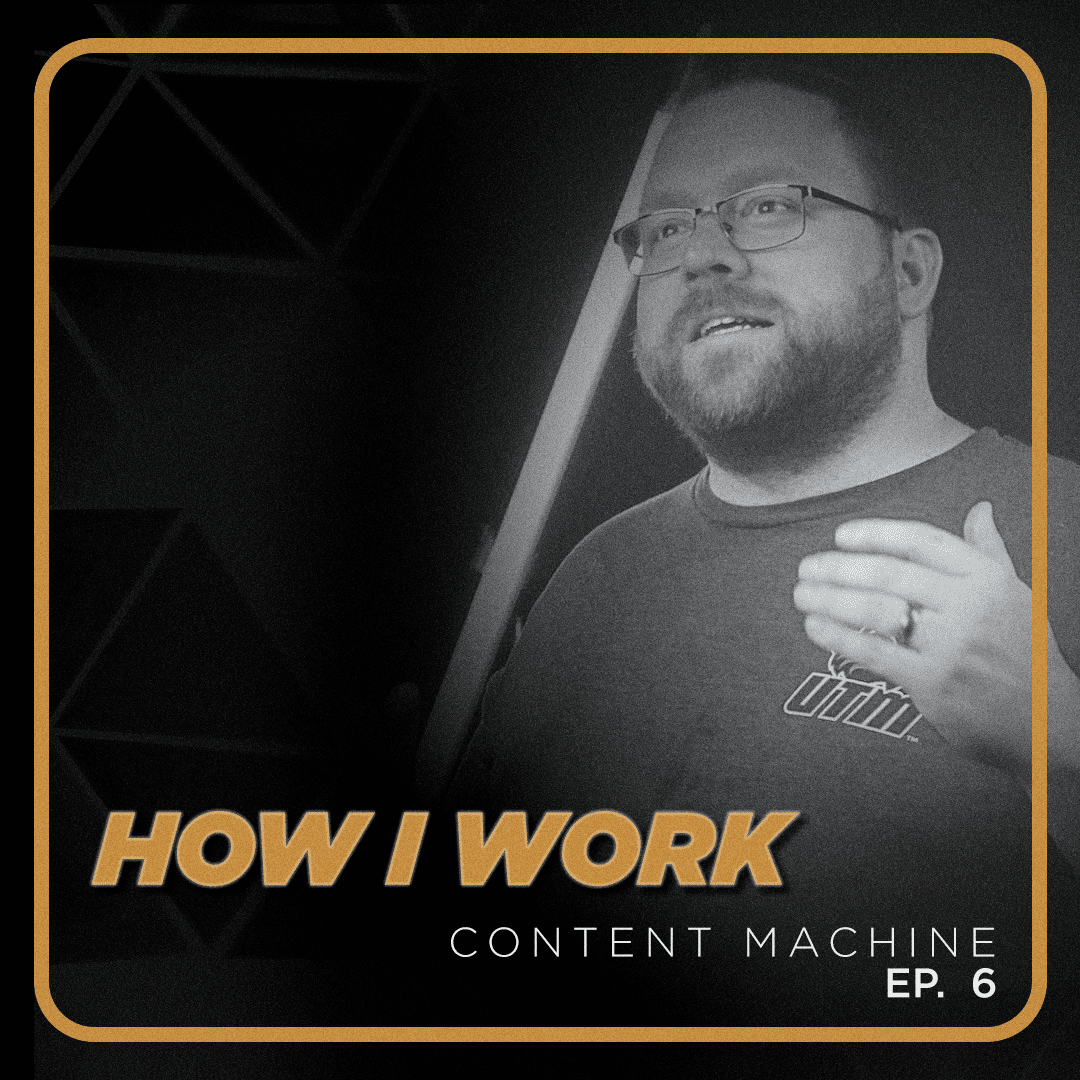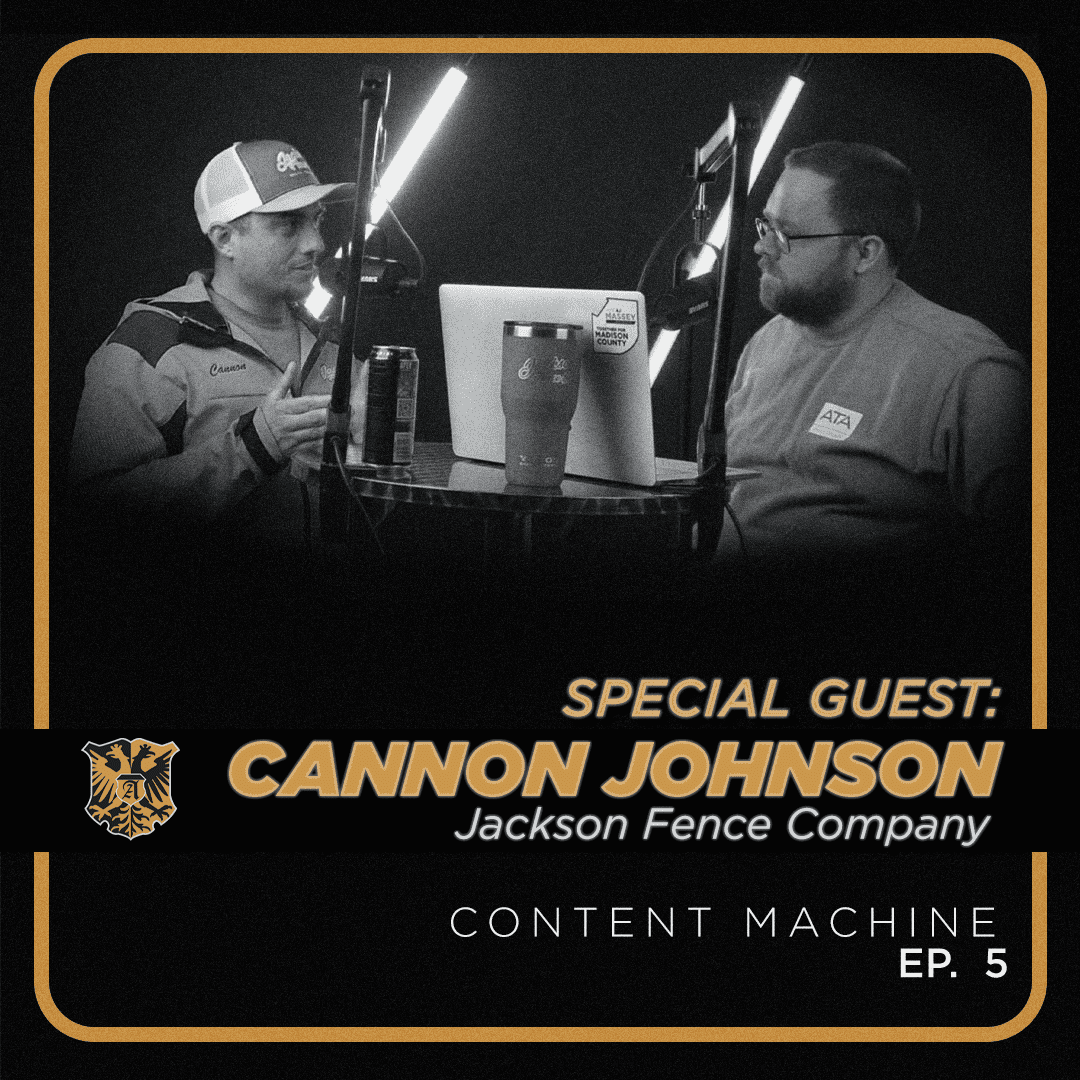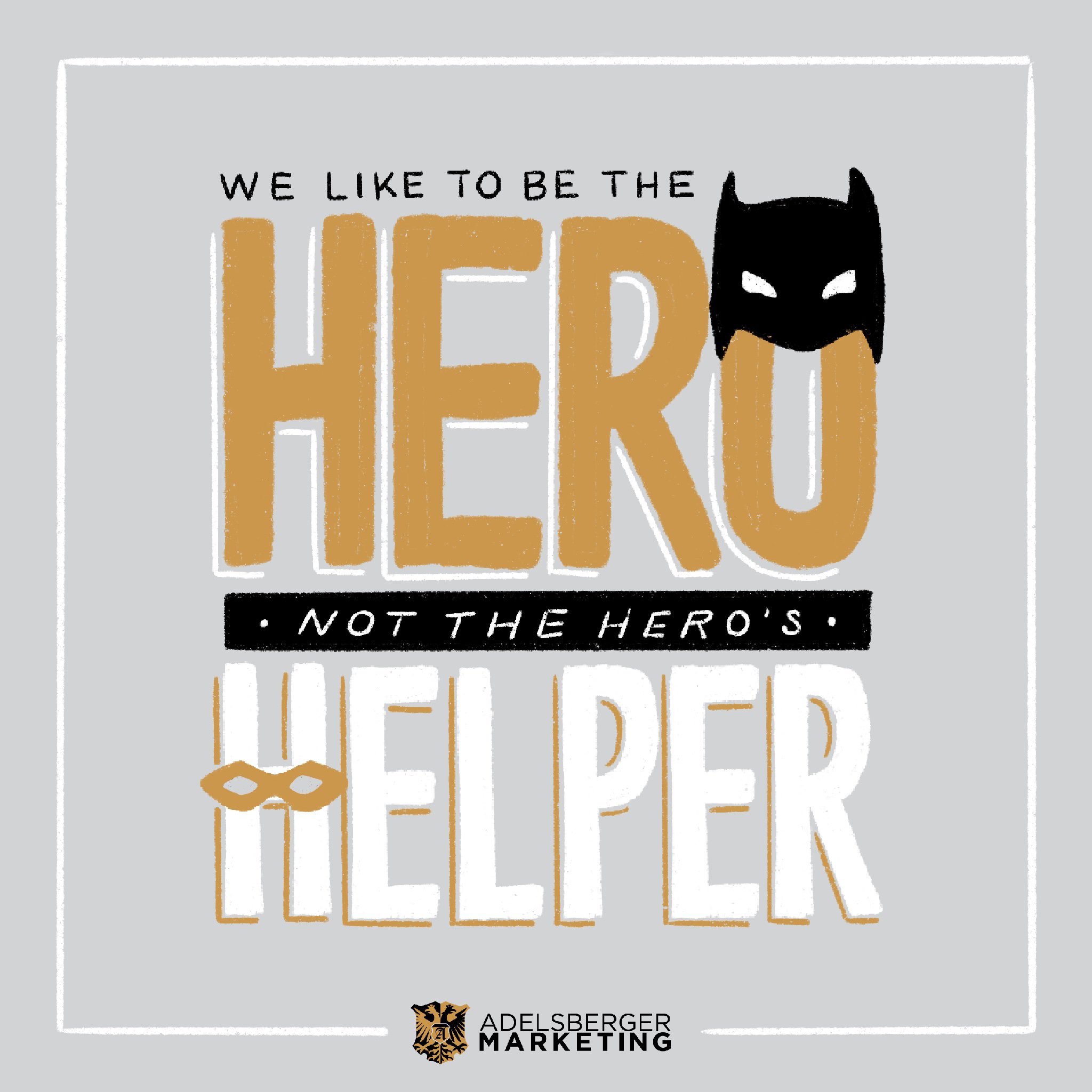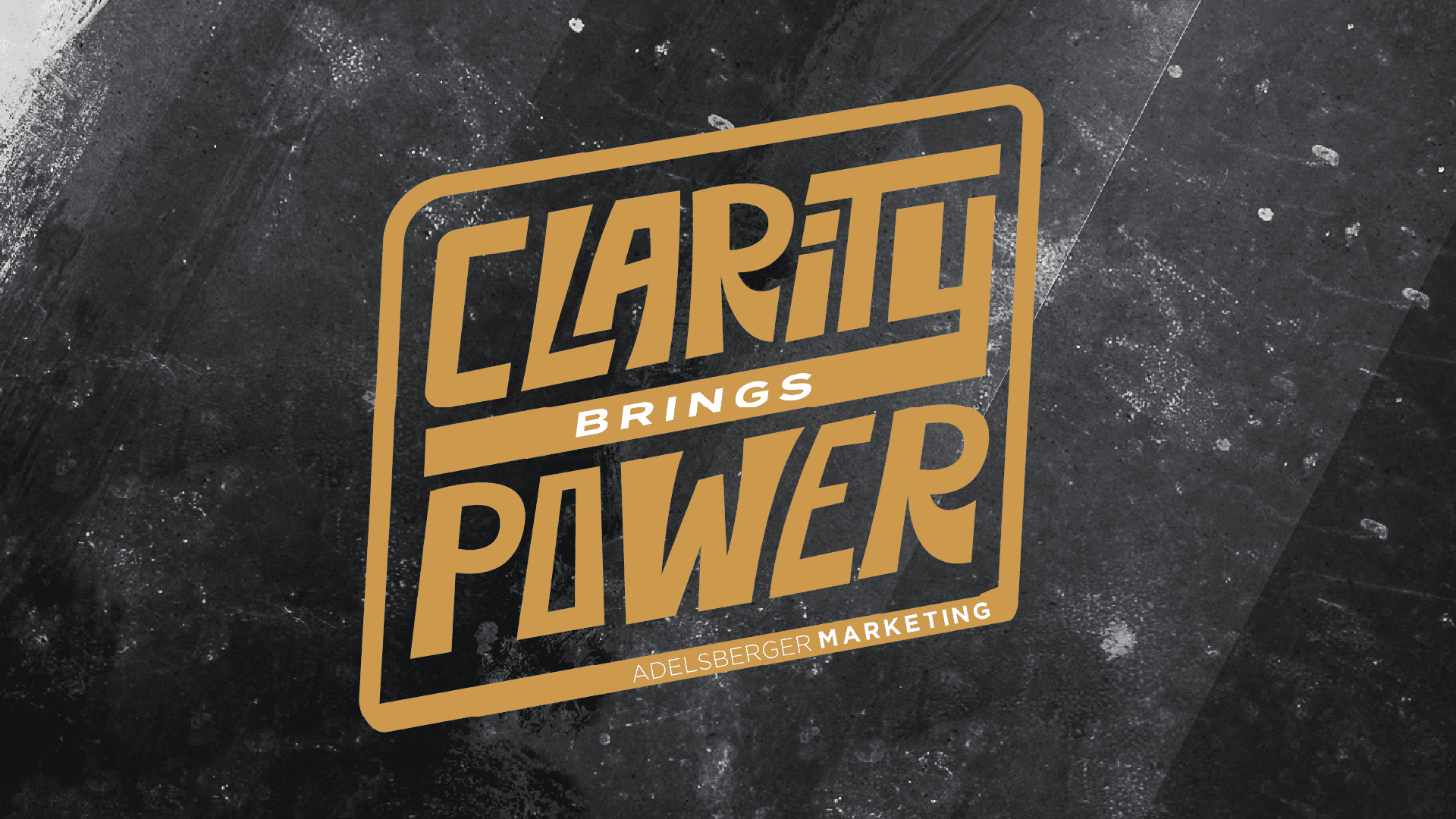So without further ado, Kevin I hate to be the guy that asked to use the microphone, but do I need to use the microphone? Can you all hear me? Perfect. That’s way more preferable for me. So yeah, Kevin Adelsberg, we’ve been in business for about eight years now. We do digital marketing. We lead companies to conquer digital marketing. We work with a wide variety of businesses, everything from boring accountants to things that are a little bit more exciting, like churches. Well, that’s not fair. What else do we do, Alex? We did make a fun hype video for accounting. Did you know you can make a hype video for accounting? You should go to ATA’s LinkedIn page. You can see that. So we do a lot of different types of marketing. And what I’m going to do today is do a quick overview of the marketing landscape for 2023. And so if we’ve got time, I already know that I’m going to run out of time. And so I’m not going to be that person that keeps you from going to work. But if you have time for questions afterwards, we’d be happy to talk to you about that.
So what’s not hot in marketing right now? Vr and Augmented Reality. That was a big push last year. I think that was really a consequence of COVID, people being locked in their houses more or less. And so Facebook and Meta, or Meta as it’s known now, is really trying to push that. But I don’t think it’s going to take off for a couple of reasons. One, people are just not excited about it. A lot of people would rather go and do something in real life like this right here. And who’s had one too many Zoom meetings in the last three years. And so there’s something nice, even though it’s a hassle to like, well, I got up at 3 30 this morning to get here. But there’s something nice about being like, Hey, Mike, nice to meet you. There’s something nice about that in personness. For something like metaverse or VR or being able to work in the metaverse, you have to have a ubiquity. You have to have a critical mass of people using that thing. And that’s what makes social media work is because there’s a critical mass of people using it. And I don’t anticipate a critical mass of people hitting that.
And then also, we’re going to see less development in these spaces for a little bit because of FONG. Does anybody know what FONG stands for? Oh, let’s drop it. Facebook, Amazon, Netflix, Google. Very good. This guy, high five. So Facebook. Fong is an acronym for Facebook, Amazon, Netflix, and Google. There’s a couple of different versions of that acronym, and it’s a way people in the tech world shorten naming all the big companies. They’re laying off people like crazy. Some of you have probably seen those business headlines. So this is an extra thing that’s not earning revenue right now. So I would imagine budget cuts are coming to those departments. So the other thing that’s not hot is NFTs. Anybody know what this is? Apeyachtc lub. The blockchain technology is not going anywhere. It’s very valuable. It’s going to be super helpful to our society as we move forward. But individual NFTs are probably, I think they may have had their heyday for the moment. And I think the pump and dump schemes are starting to fall off. And so less and less people are going to be using those. I think they will have a place in our community, but a lot of people are pushing them for marketing purposes.
And I think it was just a little bit ahead of that self. So that’s not as hot anymore either. Newspapers. There’s no newspaper reps in here, right? Go ahead. Okay. I live in Jackson, very involved in the Jackson community. And the Jackson Sun, which is owned by Gannett, is a joke. I don’t think they even have a reporter on staff. Jackson is a town of 60,000 people and 110,000 in the county, and we don’t have a reporter on the local newspaper staff. Gannett is a poorly run company and it’s going to continue to shrink. Even the Tennesseean is having less and less reporters on its staff. And so local newspapers are not hot right now. And some of the ones that are starting up to try to combat that, like we have a startup newspaper in Jackson called the Jackson Post, they don’t really have the technology back end to make it work. So I’m hopeful for it because I think as a culture, we need journalism deeply to help keep power and check. But I think there is some hope. The Daily Minfian, I know you guys are not really on the Memphis side of things, but there’s an organization called the Daily Minfian, which is an online only newspaper that is a nonprofit, and so they don’t have to worry about getting sold to a company like Gnette and then Gnette running it into the ground.
All right. What are some big headlines that you can use? And yes, I’m going really fast because David said I started at eight and I started at eight, ten. So big headlines. Tiktok demographics are continuing to change. And so 70 % of TikTok’s US audience are 19 plus. So what does that mean for you? That means it’s hard to ignore TikTok anymore if you are doing any advertising. And now on the flip side, TikTok keeps getting banned places. And so Texas, Tennessee, some other states have actually banned it on all government devices. So if you were to go to the University of Tennessee at Austin’s, which is the big UT, their sports accounts that have hundreds of thousands of followers stopped posting at the end of December because that’s when the ban took effect for Texas and Texas state employees. And so while TikTok is super popular, the federal government is also considering a ban, which I don’t think it’s going to happen. I don’t think that’s going to happen. But Tennessee has banned it on state devices, and so you can’t find the University of Tennessee on TikTok. So if you think about that, where all their target demographics attention is, they’re not allowed to be for marketing.
It’s a weird thing. Now, there are security concerns, but you notice nobody actually says what the security concerns are. They just say their security concerns, but they don’t get the details. Now, we go into a whole geopolitical discussion. We could do that later. But TikTok continues to get restricted in places. And some customers that we’ve had, like we work with a couple of financial institutions in the Jackson area, they don’t feel like they are safe enough to get on TikTok. So you might want to check with your industry things depending on what industry you’re in. But there’s a lot of opportunity there for TikTok. Also, big headline you need to know about is data protection, which is related. Does anybody know what GDPR is? Gdpr was enacted by the European Union a few years ago, and that’s why you get all those stupid pop ups on a website saying, Can I use cookies on this website? Surely you’ve all seen those, right? The reason you get all those is because of this law from the EU. Now, the European Union, for whatever its pluses and minuses are politically, are very data privacy conscious, and the US historically isn’t, except that that’s changing.
So California, Colorado, Connecticut, Utah, and Virginia have passed their own specific data privacy regulations, which is probably not a bad thing as a marketer, as a person, it’s not a bad thing. As a marketer, it’s slightly annoying because if you do business, if you are actively doing business with California, Colorado, Connecticut, Utah, or Virginia, and you have customers in those locations, I don’t know if that applies to anybody here, but you need to be aware of these data privacy restrictions because they’ll apply to you because you’re doing business in that state. I don’t anticipate that happening in Tennessee under the current governor. That’s not something that our legislature, they have other things they’re worried about. But I would definitely be in favor of a nationwide type of policy instead of someone trying to mishmash all the different rules from all the different states and then try to make sure that you follow everybody and not get fined. So data protection is super important and that’s changing. The availability of data and protecting people’s data is super important. So you need to start owning your own data. So who does Facebook ads in here? Anybody doing Facebook ads?
Two people. Okay, cool. Three? Okay. If you’ll notice, now we do a lot of Facebook ads and we do a lot of Facebook ads for a lot of different types of businesses. And one of the things that you may or may not have noticed is that the types of audiences that you can target have greatly reduced over the last several years. Some of that is because they’re getting sued by people for being able to target certain groups of people using those in bad ways. So you need to be thinking about how can you own your own data? That’s a big thing to think about. An easy way to own your own data is by building an email list of customers. If you have an email list of customers, when Facebook shuts it off, and I’ll talk more about email in a minute, you can still reach those people. And you own that data, you own that email list. I’m not suggesting spam people. Don’t buy an email list. Don’t do it. It’s not a good idea. Build your own or build an audience of people who interact with your website. Because if they come to your website, that’s your data, you own that.
So you have to figure out a way to build your own data and be less reliant on third party data. So stuff from Facebook or YouTube or things like that. In the same vein, who knew Google Analytics is sun setting? One, right? What’s your name? Debbie. Debbie, what do you do? How did you know that? I get alerts from them. That’s right. Good job. So we host like 50 or 60 websites or something like that, and we have Google Analytics on all of them because that’s a responsible thing to do as a marketer. And Google is killing off the Google Analytics we all have installed on our websites. So if you are a local company that has a website and your developer hasn’t talked to you about it, which I haven’t talked to my people about it yet because we’re still working on our plans and what to do with about it, they’re pushing everybody to GA4 or Google Analytics 4. On June 30th will be the last day that Google Analytics takes data. So if Google Analytics is important to how you run your business, you need to have this set up before June 30th.
Now, in the last two weeks, Google has announced that they’re going to start helping people migrate. But up until two weeks ago, they’re just like, you’re on your own, as Google is so prone to do. Some of this is because of data privacy. Google Analytics is going to have, in some ways more data, more specific data. Ga4 actually captures more data, but it anonymizes it more than GA Google Analytics. Google will still know all the data that is taking it in, but they just won’t share it with you because they’re so kind and helpful. So keep that in mind. Other things that are headlines that may affect you is Twitter drama. If you use Twitter as part of your business, just know that the drama is not over there. It’s just going to keep picking up and being exciting over there. I just love this exchange because sometimes you get what you ask for. But what that’s causing is, so I’m a Twitter addict. If I try, the less self discipline I have in the day, the more time I spend on Twitter. And so I was able to watch as masses of people that I follow start leaving Twitter because they have objections to Elon Musk buying it.
And so that’s moving people to other social media networks. So Facebook is not cool anymore. Tiktok has security concerns. Twitter has an owner that some people find objectionable. Instagram is owned by Facebook, so it’s toxic by relation. And so what are people to do? Because people still have this desire to be social. So there’s things like Mastodon. Has anybody heard of Mastodon? Okay, I feel like I’m making this worth your time this morning, so that’s great. Mastodon is a new social media platform that is way more complicated that you have to install your own server and things. That is way more complicated than any of this stuff. But people are thinking about moving there because they’re mad at Elon or whatever. So just know that that’s a headline you should know about.

